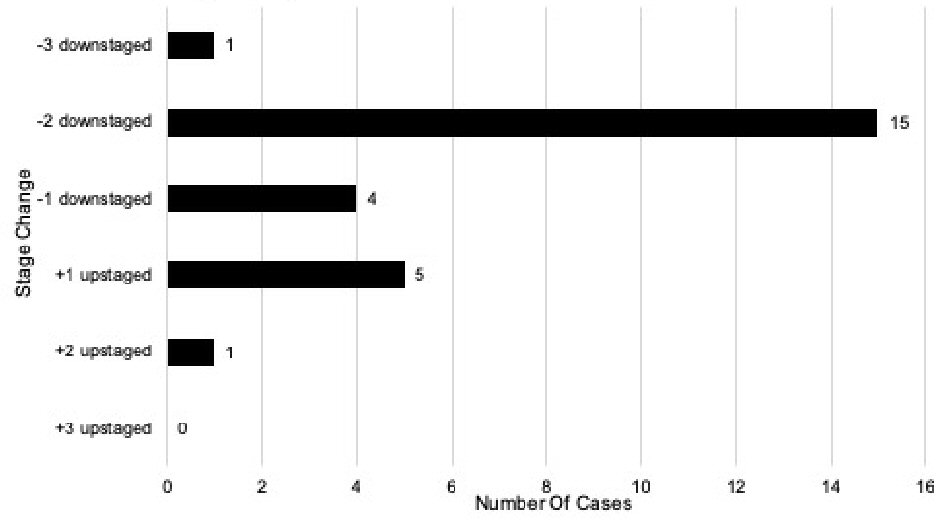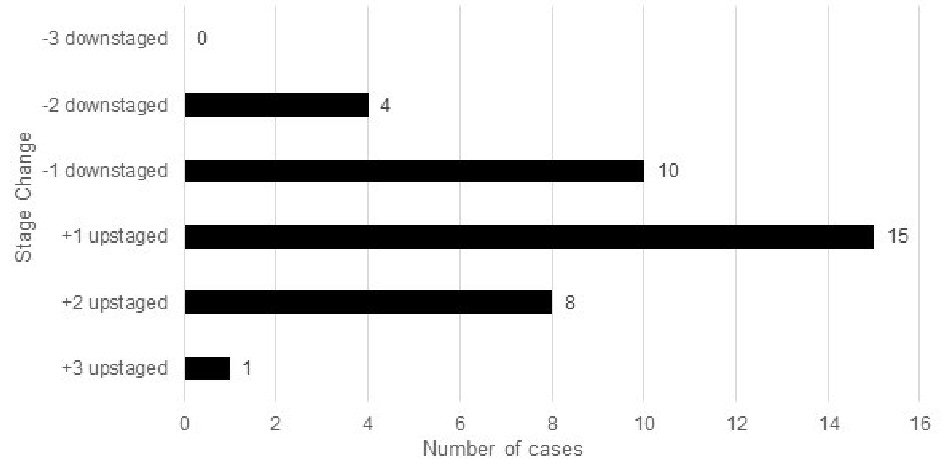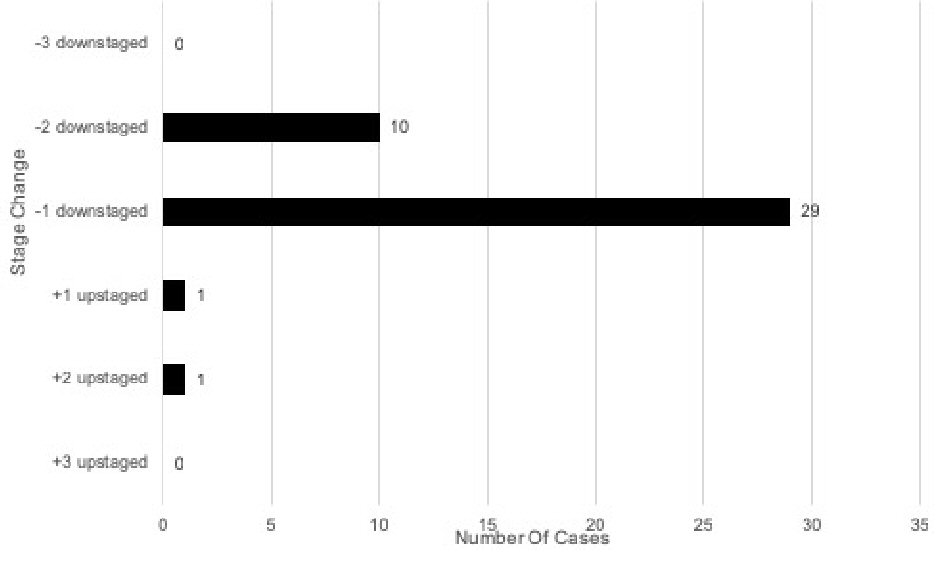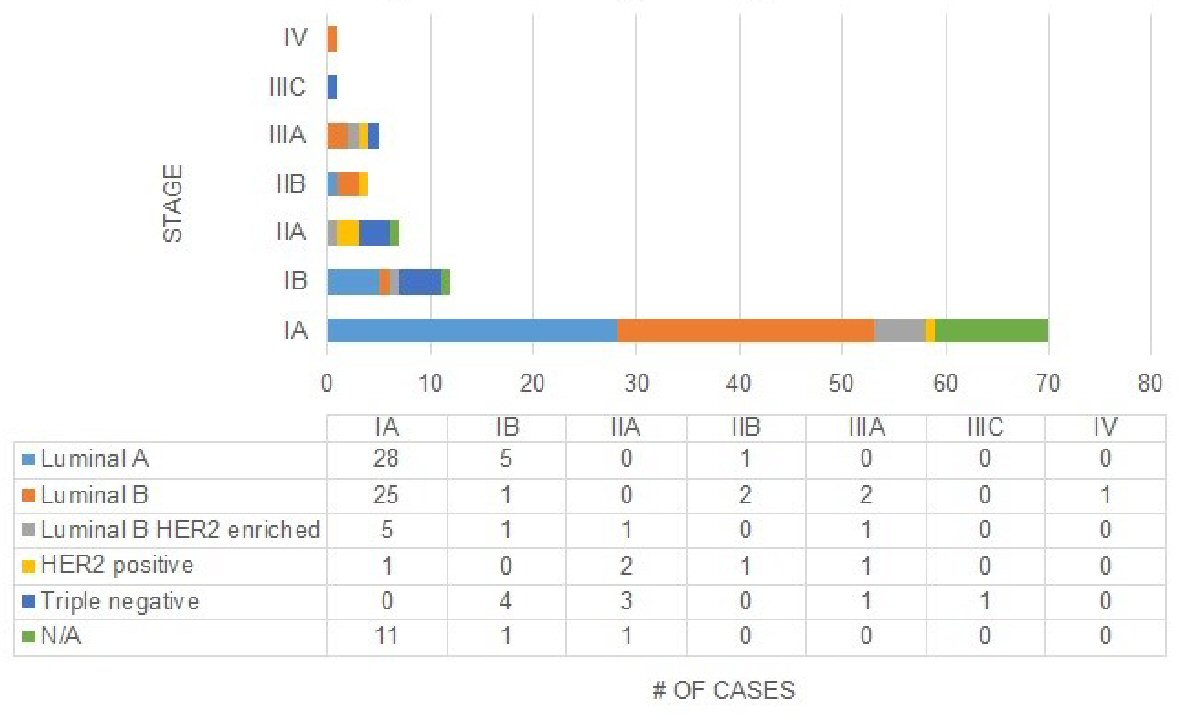
Figure 1. Distribution of the seventh edition anatomic stage, early eighth edition prognostic stage, and current eighth edition prognostic stage among breast cancer patients (n = 100).
| Journal of Clinical Medicine Research, ISSN 1918-3003 print, 1918-3011 online, Open Access |
| Article copyright, the authors; Journal compilation copyright, J Clin Med Res and Elmer Press Inc |
| Journal website http://www.jocmr.org |
Original Article
Volume 11, Number 6, June 2019, pages 407-414
The Effect of the New Eighth Edition Breast Cancer Staging System on 100 Consecutive Patients
Figures






Tables
| Characteristic | N | % of cohort |
|---|---|---|
| aTumor size grade, nodal status grade, and metastases grade are used for anatomic seventh edition staging of breast cancer tumors. | ||
| Age at diagnosis | ||
| 35 - 50 | 12 | 12% |
| > 50 | 88 | 88% |
| Ethnicity | ||
| White | 90 | 90% |
| Black | 5 | 5% |
| Asian Indian | 1 | 1% |
| Other | 3 | 3% |
| N/A | 1 | 1% |
| Tumor size gradea | ||
| T1 | 70 | 70% |
| T2 | 24 | 24% |
| T3 | 6 | 6% |
| Nodal status gradea | ||
| N0 | 79 | 79% |
| N1 | 14 | 14% |
| N1mi | 3 | 3% |
| N2 | 3 | 3% |
| N3 | 1 | 1% |
| Metastases gradea | ||
| M0 | 99 | 99% |
| M1 | 1 | 1% |
| Histological grade | ||
| G1 | 20 | 20% |
| G2 | 52 | 52% |
| G3 | 28 | 28% |
| Characteristic | N | % of cohort |
|---|---|---|
| ER: estrogen receptor; PR: progesterone receptor; HER2: human epidermal growth factor receptor-2. | ||
| Histology | ||
| Ductal | 82 | 82% |
| Lobular | 16 | 16% |
| Other | 2 | 2% |
| ER status | ||
| Positive | 87 | 87% |
| Negative | 13 | 13% |
| PR status | ||
| Positive | 70 | 70% |
| Negative | 30 | 30% |
| HER2 status | ||
| Positive | 14 | 14% |
| Negative | 86 | 86% |
| Ki67 | ||
| Positive (< 10%) | 32 | 32% |
| Intermediate (10-20%) | 10 | 10% |
| Negative (≥ 20%) | 40 | 40% |
| N/A | 18 | 18% |
| Oncotype Dx score | ||
| Low-risk (< 18) | 25 | 25% |
| Intermediate (18 - 30) | 15 | 15% |
| High-risk (≥ 31) | 1 | 1% |
| Test not performed | 42 | 42% |
| N/A | 17 | 17% |